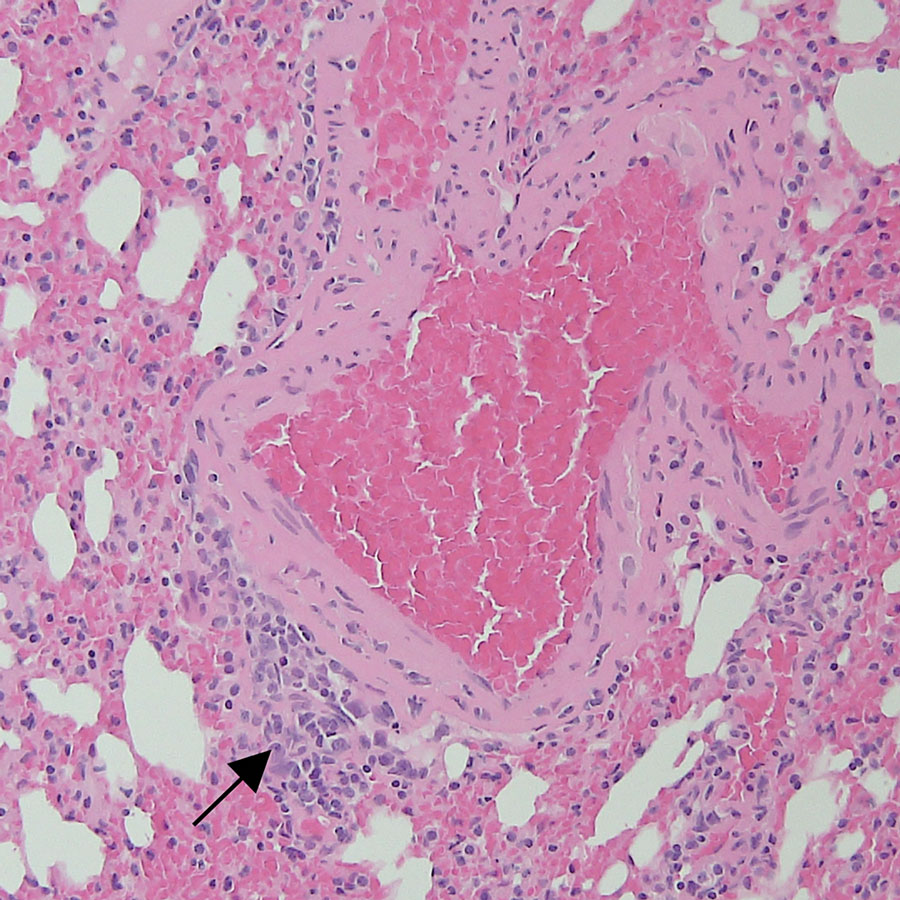Volume 29, Number 5—May 2023
Dispatch
No Substantial Histopathologic Changes in Mops condylurus Bats Naturally Infected with Bombali Virus, Kenya
Figure 1

Figure 1. Representative tissue section from the lung of a bat in study of histopathologic changes in Mops condylurus bats naturally infected with Bombali virus, Kenya. We stained lung tissue sections from a Bombali virus–positive bat with hematoxylin and eosin. Arrow indicates focal minimal mononuclear cell infiltrate. Original magnification ×200.
Page created: March 06, 2023
Page updated: April 18, 2023
Page reviewed: April 18, 2023
The conclusions, findings, and opinions expressed by authors contributing to this journal do not necessarily reflect the official position of the U.S. Department of Health and Human Services, the Public Health Service, the Centers for Disease Control and Prevention, or the authors' affiliated institutions. Use of trade names is for identification only and does not imply endorsement by any of the groups named above.